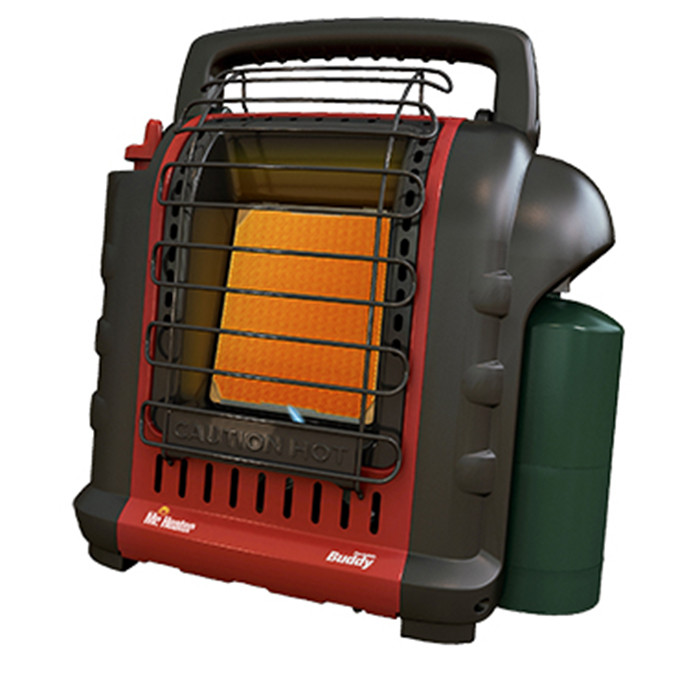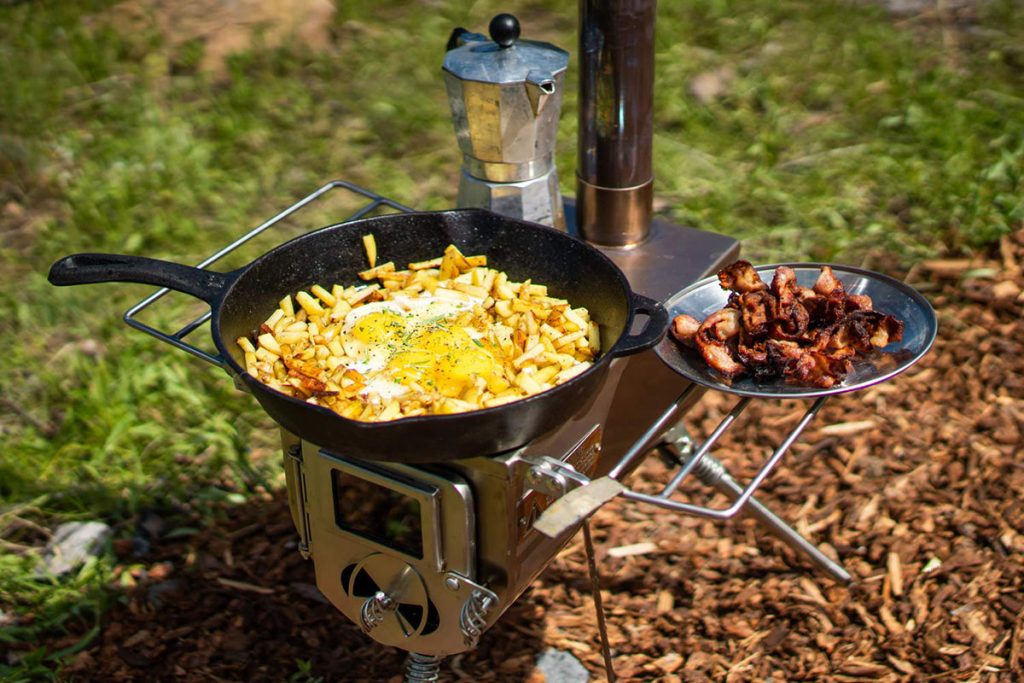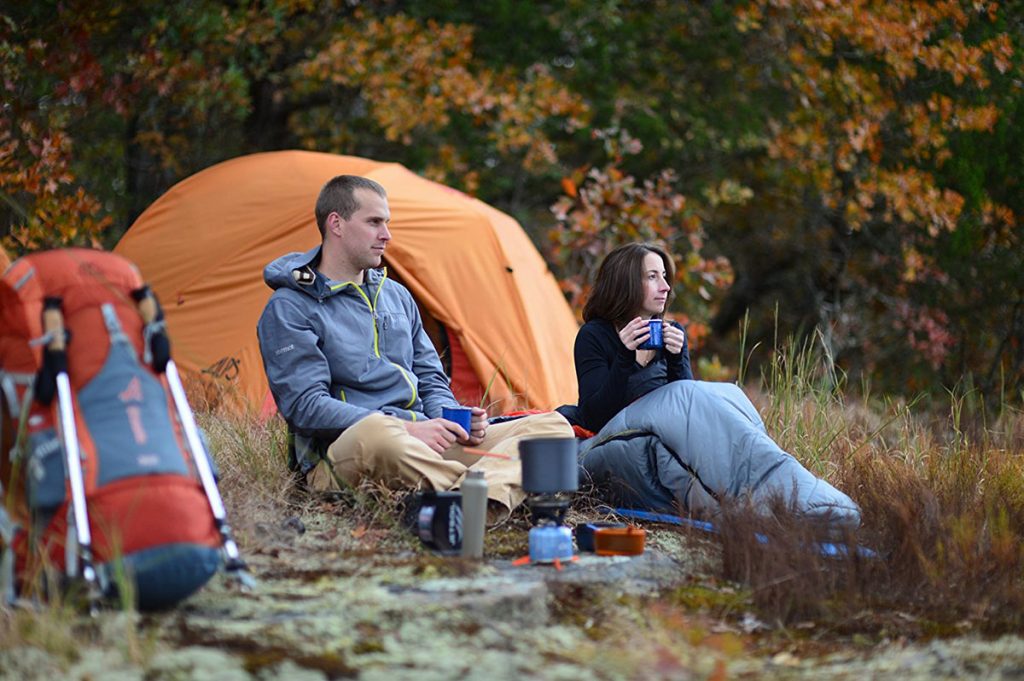Last Updated on August 5, 2023 by Dean Anderson
It’s not much fun being cold in a tent. For that reason we’ve compiled a bunch of tips on heating a tent.
We’ve not listed these in any particular order but I suppose they could be divided into keeping yourself warm and keeping the tent space warm. They’re not mutually exclusive but they are slightly different things.
Here are our top 12 tent heating ideas.
1. Buy the best tent you can afford
They say a good workman never blames his tools but lets face it having decent tools helps. If you are venturing out to camp in colder weather then you might want to think twice before taking that summer pop up tent.
Consider something a bit more substantial that’s rated as a 4 season tent. If funds allow a canvas tent is a brilliant option, they’re cool in the summer and warm in the winter. Furthermore canvas tents are a perfect partner for a wood stove.
Alternatively buying a good branded polyester tent with a thick bathtub floor and a full tarp will be your best bet. There are further hacks you can employ to insulate your tent.
While you’ll want space to move around don’t use a tent that’s too big or you’ll have a larger space to heat. Unless of course there are more of you.
2. Location, location, location
Taking time to consider the best location to setup your tent is a good move. You can take advantage of natural wind breaks, tree foliage and the topology of the ground. Considering these will protect you from cold winds and unnecessary exposure to rain or snow. We talk more about tent location in our list of camping tips.
3. Sleep off the ground or use insulation
Heat rises, so the warmest part of the tent is the apex or roof space. Unless you’re sleeping on the top of a Disc-O-Bed bunk you’ll be closer to the ground.
The ground is cold so the more things you can put between it and you the better. Here’s our ideal sleep system for car camping from the ground upwards;
- Tent with bathtub floor and additional foot print beneath
- Camping cot with min 12″ ground clearance
- Min 2″ Insulated Closed Cell Sleeping pad
- -40 Winter Sleeping bag
If you’re backpacking then all that gear won’t be practical, in which case consider the following;
- Tent with bathtub floor
- Insulated Closed Cell Sleeping pad
- -40 Sleeping bag
4. Consider a propane heater

Not everyone will be comfortable with this one. After all you’re burning fuel in a tent that can potentially release carbon monoxide.
The key is to have adequate ventilation so that clean air can flow into the tent and any waste gases can escape. Using a carbon monoxide detector is also a good idea.
If you can get past this, tent heaters are brilliant. They heat the space quickly and cheaply and most models like those here from Mr Heater will cutout if they’re accidentally knocked over.
Various sizes are available though they’re more suited to car camping rather than backpacking.
5. Heat, dry and cook with a wood burning stove

A step up from a propane heater for car campers on longer trips is a wood burning stove. We recently reviewed 5 models, perfect for hot tenting, a couple of which are excellent.
You’ll need a tent with a stove jacket so that the stove pipe can pass through the roof without burning the tent down. A suitable tent will more than likely be made of canvas. Bell tents and those from Kodiak, Springbar, Teton and White Duck are ideal.
Once you’ve got the burn rate right via the various dampers and controls you can keep warm in a tent all through the night. There is a learning curve in using a wood stove but once you get the knack there is a real pleasure in the comfort they offer. Especially if it’s a model with a viewing window so you can see the flames.
6. Layer up clothing
A simple but effective tip to keep warm in a tent. You’ll need at least a base, middle and outer layer.
The base layer will wick sweat away from your skin, polyester is good for this. The middle layer should be your insulation. A snug but not tight sweater or fleece will do this job perfectly. The outer layer will be your wind break and/or waterproof element.
When you’re getting ready to settle down in your tent you’re probably not going to be wearing your rain jacket. I tend to opt for 2 base layers. They shouldn’t be too tight that your sweat can’t evaporate. In this scenario moisture is your enemy.
7. Get a good sleeping bag to suit the conditions

Ensure you take a sleeping bag that’s up to the conditions you’re camping in. As per the tent these will be rated by season. A good fitting mummy style bag will also insulate you better with less pockets of air.
If you have children with you they will be warmer in their own kids size bags rather than using that of an adult.
8. Exercise before going to bed
A little light exercise before settling down will raise your core body temperature slightly. This will warm your feet and other extremities because of improved circulation.
You don’t want to do anything too vigorous though, so no high intensity cardio exercise or anything that will elevate adrenaline levels. Your body needs time to wind down.
9. Heat some dry rocks
This might not be for everyone but if you’re a more experienced outdoor type or have a military background then you should be OK. There’s lots of examples on YouTube of people employing this technique, like the one below;
Firstly it’s vital that you only heat dry rocks in your camp fire. Any porous rock types could potentially explode if they have lots of moisture in them. So don’t use rocks from near a river bed for example.
Lets assume you have relatively dry rocks available. Heat these for 3-4 hours around the edge of your camp fire. You’ll then need a means of moving the rocks inside your tent. Perhaps you could lever them onto a wood burning stove drip tray or baking tray or just use a shovel to move them.
If your tent has a bathtub style floor rather than open ground you don’t want the rocks directly on that. Especially if it’s polyester or vinyl, it will melt. Most people that promote this technique dig a shallow pit and put the rocks in that. The tent is erected above the pit.
Once in place the rocks will act like a radiator releasing heat slowly through the night. Just keep them away from little fingers and toes.
10. Wipe down any moisture on tent walls
In some less breathable tents, particularly nylon, water vapor can evaporate and then condense on the tent walls. This will drip and lower the overall temperature of the tent. Use a clean, dry cloth to wipe and soak any excess moisture from the tent walls.
11. Seal wet clothes into bags
In the example above the cloth should then be sealed away into a bag so that the moisture can’t evaporate again. This goes for any clothes that might be wet that you don’t need to dry immediately. Store them elsewhere, in your car trunk, outside or in a bag or container so that moisture doesn’t build up.
12. Sleep close together
If you’re breathing, you’re burning calories and giving off heat. Sleeping close to each other will help you get the benefit of the heat from other people.
Wrapping things up
As you can see heating a tent to keep warm doesn’t have to be difficult or expensive. There are plenty of primitive ways to go about this. Perhaps you’ve got one that I’ve missed? If so let me know in the comments below.

Eight years ago, I took a risk and left a miserable office job to follow a lifestyle career that involved my love for the great outdoors. I’ve taken my love for camping, hiking and travel to the next level by running my small campground with a friend near Portland, Oregon. It’s for way less money but this has truly been a dream come true and the running involves lots of family and friends.
The next evolution of that was to get online and start allcampingstuff.com. At our campground, I spend a lot of time setting up camping equipment for customers and disposing of the garbage products they leave behind. If I can help just a few people with advice on good camping gear, then this website venture will be worth it.
So, if you want to avoid the duds and spend your money wisely you’ve hopefully come to the right place.



